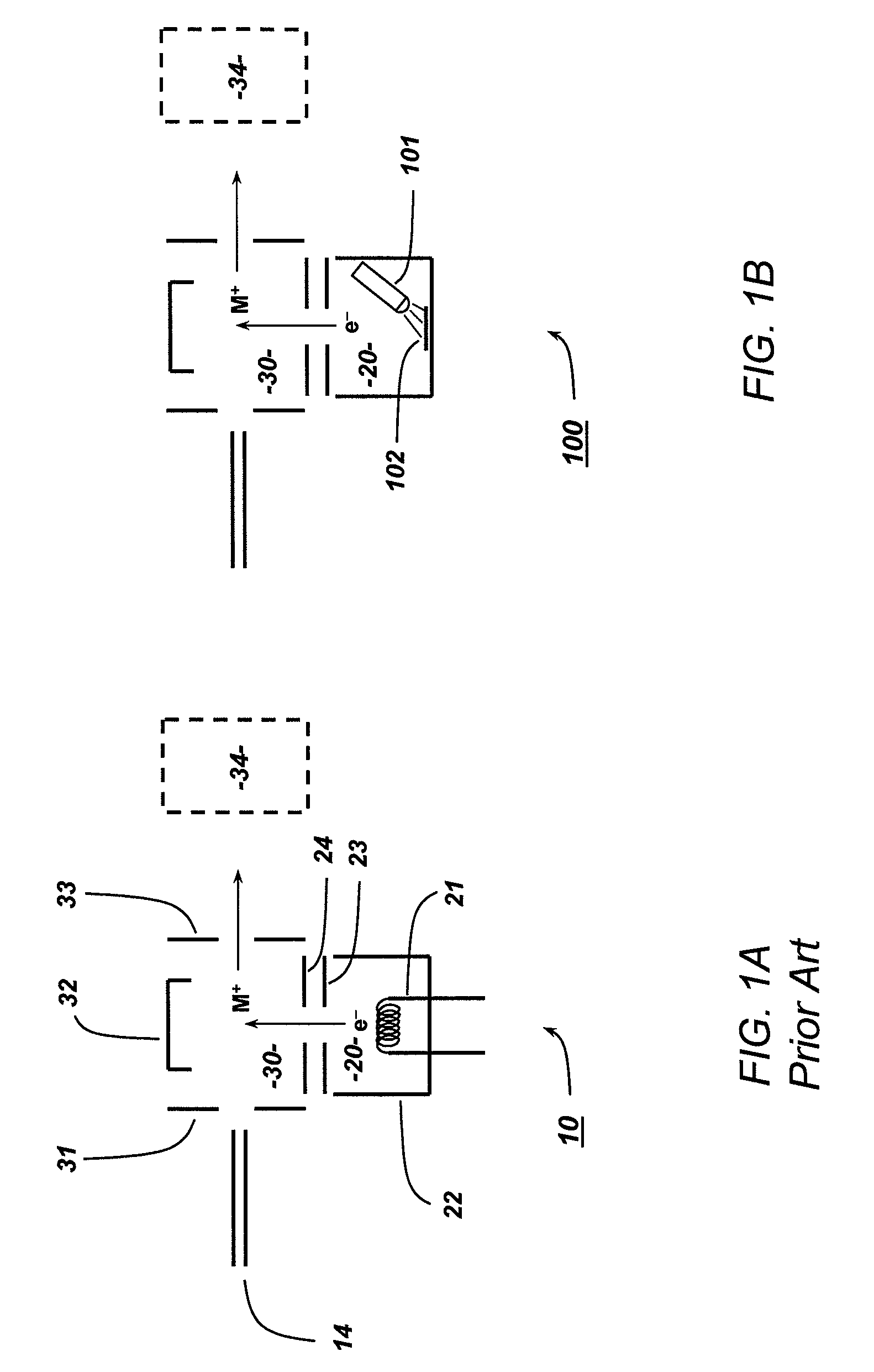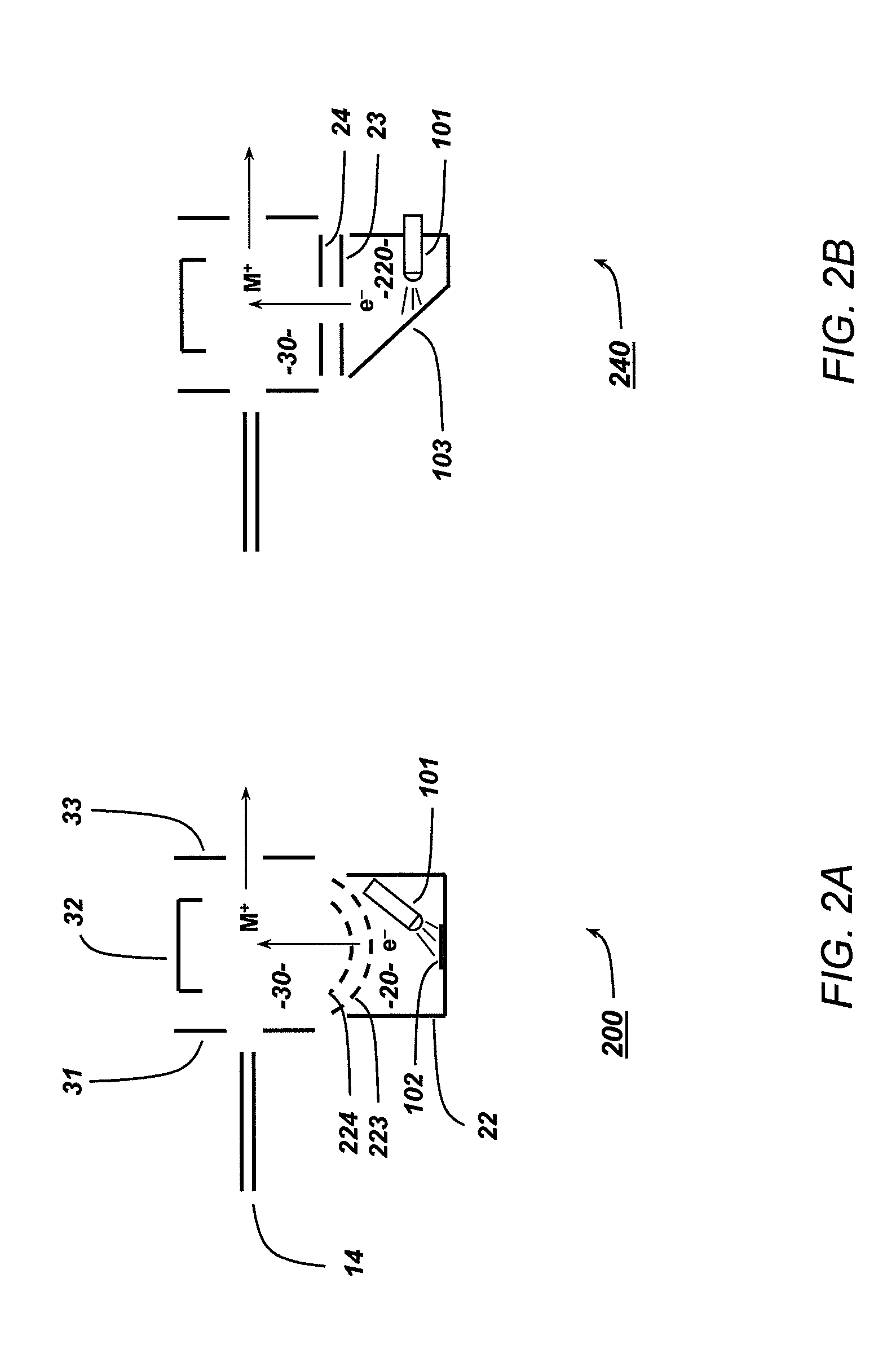Photoemission induced electron ionization
a technology of electron ionization and photoemission, which is applied in the field of detection apparatuses, can solve the problems of not being able to address the total electron flux, not being able to use as an ionization source, and greatly reducing the intensity of the electron beam
- Summary
- Abstract
- Description
- Claims
- Application Information
AI Technical Summary
Benefits of technology
Problems solved by technology
Method used
Image
Examples
Embodiment Construction
[0026]Disclosed is a monitor that can detect at least one molecule. The monitor includes a housing with a passage that can receive a sample, and a photocathode that is located within the housing. The monitor also includes a first ultraviolet light source that can direct ultraviolet light onto the photocathode to create electrons that ionize molecules within the sample, and a detector that is coupled to the housing to detect at least one ionized molecule. The monitor enables electron ionization (EI) of a sample for chemical analysis without the disadvantages of current methods that use a hot filament or other thermal cathode devices. The ionization device is especially useful for GC-MS instrumentation since it can provide highly fragmented ions, which are useful for structure analysis and for identifying molecules against an EI data base. However, it can also provide a high yield of unfragmented ions, which are important for the emerging application of GC-MS / MS, wherein instead of fr...
PUM
 Login to View More
Login to View More Abstract
Description
Claims
Application Information
 Login to View More
Login to View More - R&D
- Intellectual Property
- Life Sciences
- Materials
- Tech Scout
- Unparalleled Data Quality
- Higher Quality Content
- 60% Fewer Hallucinations
Browse by: Latest US Patents, China's latest patents, Technical Efficacy Thesaurus, Application Domain, Technology Topic, Popular Technical Reports.
© 2025 PatSnap. All rights reserved.Legal|Privacy policy|Modern Slavery Act Transparency Statement|Sitemap|About US| Contact US: help@patsnap.com



